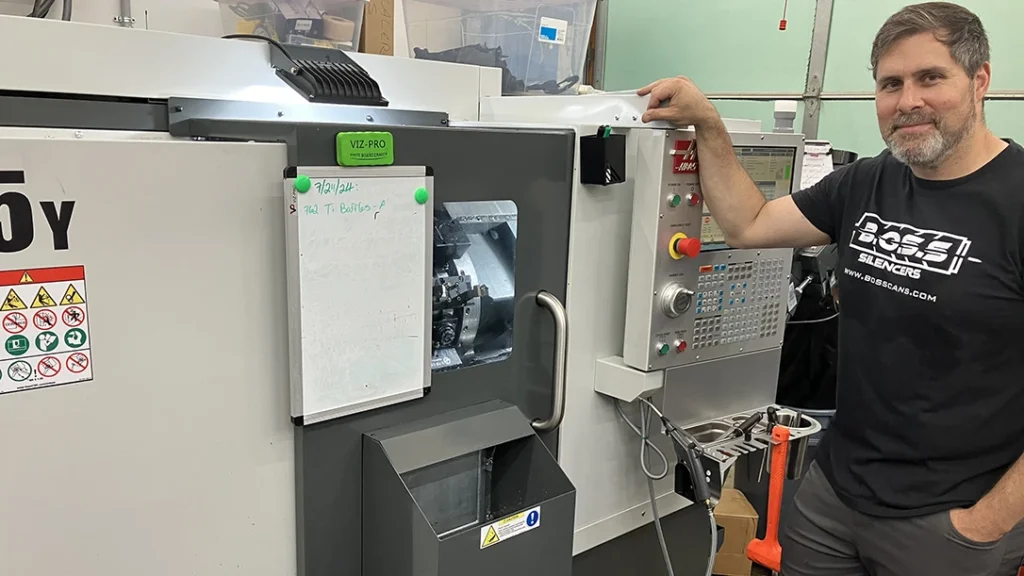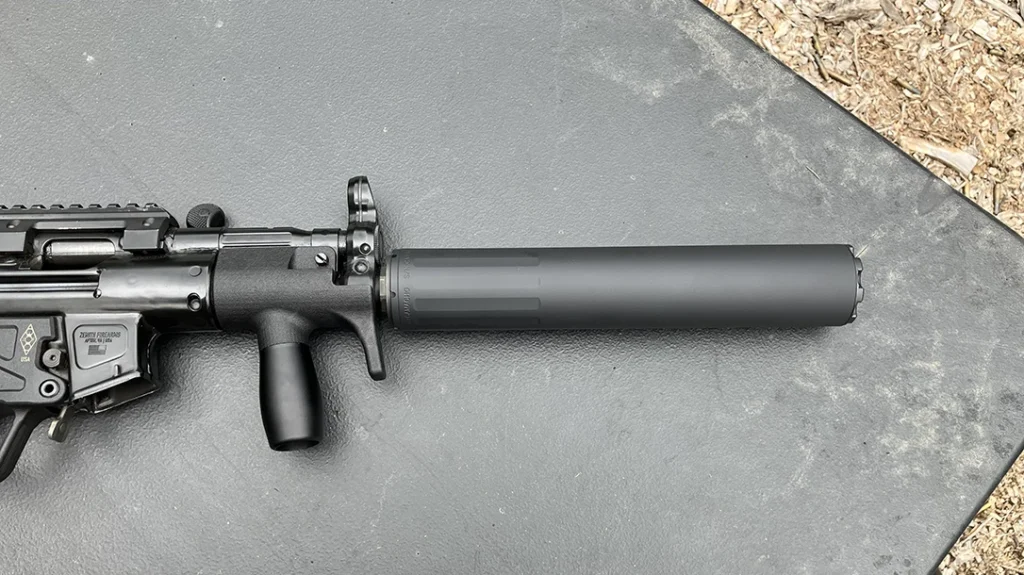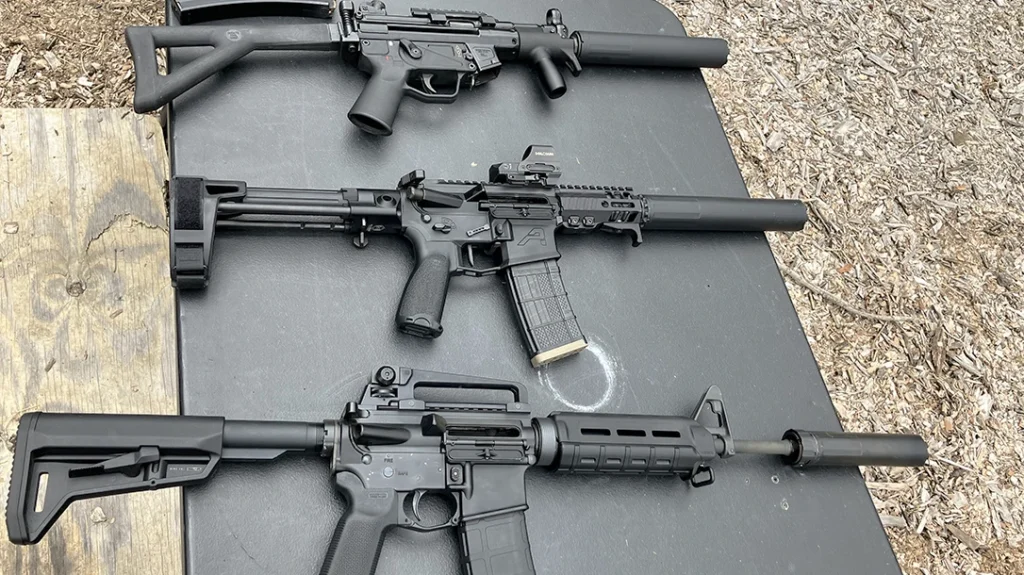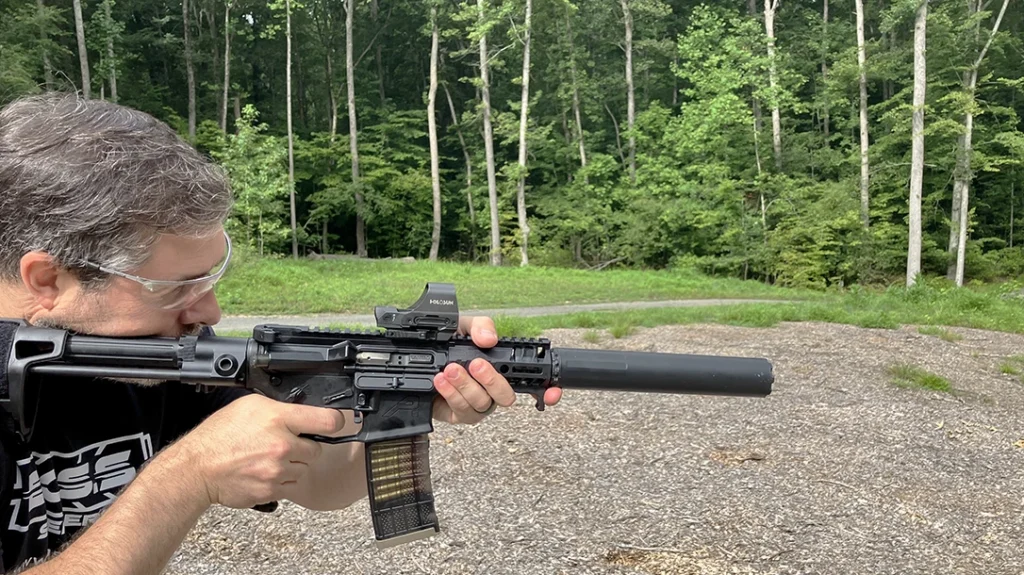It is only natural that companies tout advantages of their designs and manufacturing techniques. This is how business is conducted. My introduction to B.O.S.S. Silencers (Black Ops Suppression Systems) came via my FFL/SOT Stonewall Arms. B.O.S.S. owner Michael Cain was visiting Stonewall Arms discussing his wares and gauging Stonewall Arms’ interest in becoming a distributor. I took the opportunity to jump into the conversation asking what distinguishes B.O.S.S. suppressors. I expected the standard answers of quality control, attention to detail and so forth. All are valid. Michael impressed with more detailed response including paying homage to Nikola Tesla’s patented “valvular conduit” theory better known as the Tesla Valve. He had my attention.
Michael is an electrical engineer by training. Any time spent with him lets you know he is one smart dude with a mind that doesn’t stop churning finding satisfaction working on complex problems, especially ones that others say are impossible to solve. A day spent visiting his Virginia manufacturing facility revealed an interesting story of what got him involved in the suppressor business. After all, suppressor are more of a mechanical engineer’s realm.

Advertisement — Continue Reading Below
Michael’s time as a DoD civilian employee found him in multiple war zones, including Afghanistan. He described incidents in which service weapons were used without hearing protection. He found the noise associated with rifles firing in and around vehicles life changing both psychologically and physiology due to hearing loss he suffered. Michael’s started analyzing how best to solve the problem.
B.O.S.S. Silencers History
B.O.S.S. corporate roots are traced back to 2015 with more of a technological bent, remember electrical engineer. The quest to create a B.O.S.S. suppressor ramped up during initial COVID quarantines. B.O.S.S. started with a blank slate when it came to suppressor design with no preconceived notions or established manufacturing techniques to influence or sway any particular direction. Any internet inquiry involving Tesla Valve Theory and suppressors will find many naysayers. Michael was not bothered by this and starting digging in. Using the Tesla Valve theory as basis of B.O.S.S. suppressors is not the only unconventional part of their production.

Advertisement — Continue Reading Below
Most of today’s suppressors are either welded together or more recently 3D-printed, both of which have numerous pros and cons. Taming of gas, thus noise control, is attacked with stacking baffles or internal monocore structures. Baffle stacks are several separate sections of cone-like shapes placed atop one another to create a series of partitions and passages that helps disperse and redirect the expanding gases when a shot is fired. Typically, these baffles are slid inside an outer tube or sleeve with the end caps welded or threaded on. A monocore type suppressor takes advantage of advanced multi-axis CNC machining to create shapes and designs that cannot be replicated by any baffle-stack design to deal with gas flow.
Suppressors’ Details
B.O.S.S. suppressors more of a traditional baffle stack is utilized with certain key improvements. B.O.S.S. starts with raw tube of Grade 9 Titanium with the baffles, mount, and cap being created either from 17-4 H900 Stainless Steel or Grade 5 6Al4V Titanium depending on if designated stainless or titanium model. 17-4 H900 is used for blast baffle for all models.
No less than four unique baffle profiles, often more depending on specific B.O.S.S. suppressor model, are then stacked in a very specific order, which is what allows the Tesla-inspired vents to function properly and are indexed to each other to allow for perfect alignment of the asymmetrical baffle clips. This was one part of his manufacturing process Michael requested not to be photographed for obvious proprietary reasons. B.O.S.S. has purposely not filed for a patent so as not to have to detail their specialized methods. Along these lines, B.O.S.S. has created a unique baffle retainer that is installed via a tool of their own design/manufacturing.
Advertisement — Continue Reading Below
B.O.S.S. locking ring approach eliminates concerns from older method of suppressor manufacturing. Thread locking compound is also used. B.O.S.S. end caps are installed via proprietary thread pattern and tightened with 3D-printed end cap tool that arrives with the suppressor.

Michael admits this process is more cumbersome to manufacture than welding or 3D printing, but it also eliminates the structural limitations of welding and the maintenance complications of 3D printing. The complex Tesla-inspired B.O.S.S. baffle profiles allows for gas flow at near-3D printed levels of complexity, and B.O.S.S.’s robust retention system accommodates provides full-auto rating for the entire B.O.S.S. product line.
Advertisement — Continue Reading Below
Shhhh…. B.O.S.S. Silencers AT WORK
Numerous B.O.S.S. suppressors were handled during the Stonewall Arms visit as well as my pilgrimage to B.O.S.S. HQ. A B.O.S.S. Guillotine on a “fun switched” M4, Camacho suppressors on .300 BLK AR, bolt action .300 BLK and MP5 9mm clone, and Executive 46 on Smith&Wesson 1854 .44 Mag lever action. B.O.S.S. suppressors are HUB compatible. The various cans were either direct threaded, attached via three-lug muzzle prong, or other 3rd party quick detach systems.

B.O.S.S.’s unique approach using Tesla inspired baffle stacks with their specific orientation of gas vents produces two very sought after attributes—superior sound reduction levels and substantial reduction in back pressure all in a suppressor that is usually smaller and lighter than competitor cans. B.O.S.S. back pressure levels are somewhere in between a flow through and standard suppressors. This was an unexpected, yet highly appreciated, side benefit of the B.O.S.S.’s baffle design. During range testing of B.O.S.S. suppressors, specifically the Guillotine and Camacho, even after multiple stand in place magazine dumps gas was not found irritating to the shooter.
Advertisement — Continue Reading Below
Flow Through
“Flow through” suppressors have gained traction in the suppressor world. This is for good reason. Flow through is a suppressor designed with an internal gas flow path to limit toxins/gasses blowing back into the shooters face via the action and ejection port. Gasses exhaust out the front more efficiently versus traditional suppressors. Flow through suppressors recognize the safety concerns of exposing shooters to hydrogen cyanide, ammonia, carbon monoxide, and aerosolized metal toxins. Training inside a CQB shoot house where the air is often thick with muzzle gasses leaves no doubt you don’t want this dumping back near your face.

Another advantage of the flow through concept is limiting back pressure negatively impacting a weapons operational timing impacting reliability and long term durability due to cyclic rate increase with components moving at speeds not intended in original design.
Advertisement — Continue Reading Below
B.O.S.S. suppressors “punch” far above their weight in terms of sound reduction for their size. This was supported with side-by-side comparisons of B.O.S.S. suppressors with other manufacturer cans. Both my own as well as Stonewall Arms demo can inventory. This was an invaluable exercise that brought home B.O.S.S. advantages—engineering combined with field experiments at work not marketing hype. In Micheal Cain’s own words, “…. through a series of trials and errors, B.O.S.S. has discovered a viable application of the original Tesla Valve to the complex nature of suppressing muzzle gasses. If you want the reduced back pressure of a flow-through but still want the sound reduction of a non-flow through, B.O.S.S. products are your solution!”
Doing It “My Way”
B.O.S.S. Silencers did not seek to mimic other suppressor designs. Instead, they chose their own path backed by science, engineering, and hard learned trial and error. It is understood that suppressors are not solely judged in terms of decibel reduction. What am I talking about? Back pressure, ease of mounting on a weapon, adaptability to multiple platforms, weight, length, and durability all comes into play. B.O.S.S. suppressors succeed no matter criteria used to judge. B.O.S.S. Silencers has figured out the suppressor business. Find out more by visiting B.O.S.S. Silencers.
























